THOUGHT/DESIGN PROCESS DIVE IN
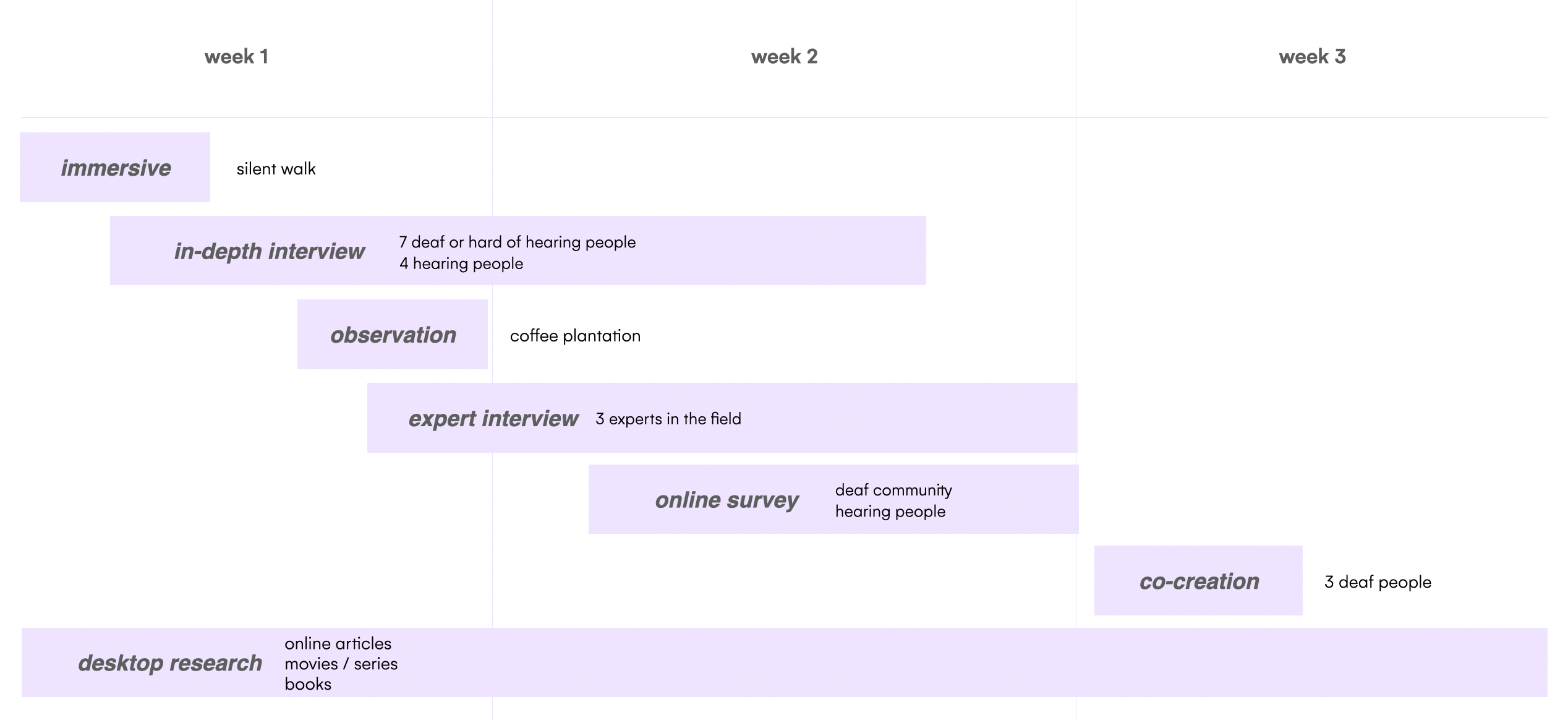
My design process usually begins with foundational research. Desktop research is done from the first phase all the way through to the end. Resources are usually a large number of books, articles, papers, podcasts, and movies. This is where I absorb endless amounts of knowledge about the topics I care about. For this project, in addition to these, I started by walking around the city wearing earplugs so powerful that I could barely hear the car horns.
The first thing I noticed was how much I rely on sound in my daily life. I learned how much the sound of cars ensures my safety when I walk down the street, and I also learned that the deafness is difficult for others to understand. My lack of hearing was not noticed by anyone in the city. I saw many people on the street that same day who were kind to the blind, but do we ever notice people who are hearing impaired?
The first thing I noticed was how much I rely on sound in my daily life. I learned how much the sound of cars ensures my safety when I walk down the street, and I also learned that the deafness is difficult for others to understand. My lack of hearing was not noticed by anyone in the city. I saw many people on the street that same day who were kind to the blind, but do we ever notice people who are hearing impaired?


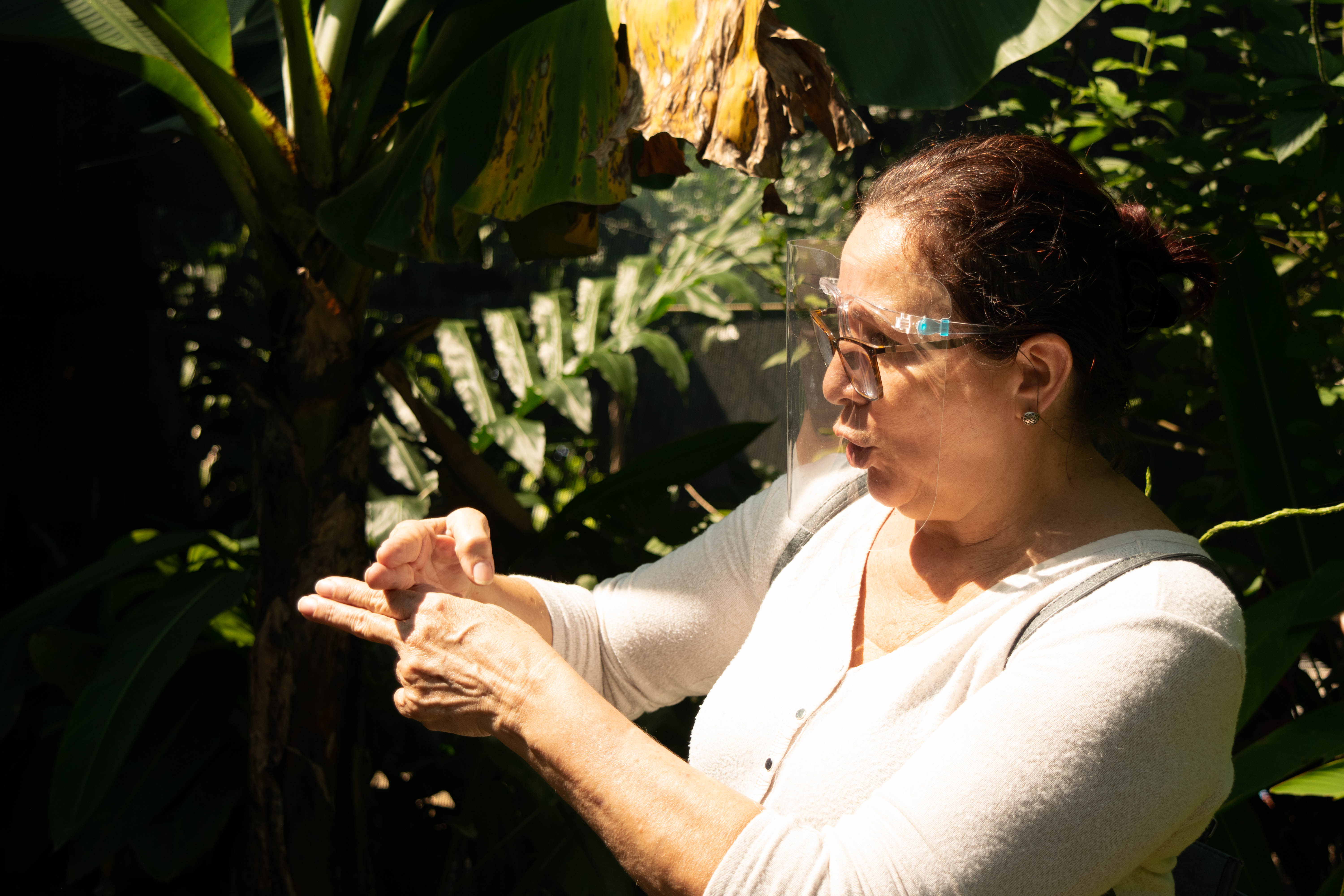
Because of the fact that the in-depth interviews were online and required translation from Costa Rican sign language to Spanish and from Spanish to English, I was concerned about the possibility of having a heart-to-heart dialogue with them. In spite of this, they were very open and shared a variety of stories ranging from everyday frustrations to special experiences only the hearing impaired can have. I was blown away by the beauty of sign language and the pride in being deaf. Meanwhile, I discovered a lot of fascinating things, including the fact that visual information can be noise to them. I am always encouraged by the conversations I have with these people at this stage of the design process.
As one of the activities, I went on a tour of a coffee plantation with a group of deaf people. I was curious to see how they use their senses in a natural environment filled with the aroma of coffee. I also wanted to see how they communicate with each other and with hearing people like me.
As one of the activities, I went on a tour of a coffee plantation with a group of deaf people. I was curious to see how they use their senses in a natural environment filled with the aroma of coffee. I also wanted to see how they communicate with each other and with hearing people like me.
In the midst of this activity, I observed a deaf girl with a cell phone screen with a picture of a KPOP group on it, and my mind immediately started wondering.
Does she listen to music?
As I questioned her, she told me that she experiences music by watching the dancers and touching the vibrations of the music. My curiosity led me to conduct an online survey, and all 24 people who responded said they listen to music. Some even dance and sing in sign language.
Does she listen to music?
As I questioned her, she told me that she experiences music by watching the dancers and touching the vibrations of the music. My curiosity led me to conduct an online survey, and all 24 people who responded said they listen to music. Some even dance and sing in sign language.

Based on insights I gained from my intial research activities, I defined the design opportunity as: how might we create an inclusive environment by bridging the gap between the deaf and hearing people and reduce the barriers of accessibility?
INITIAL IDEATION & FEEDBACK FROM COHORT
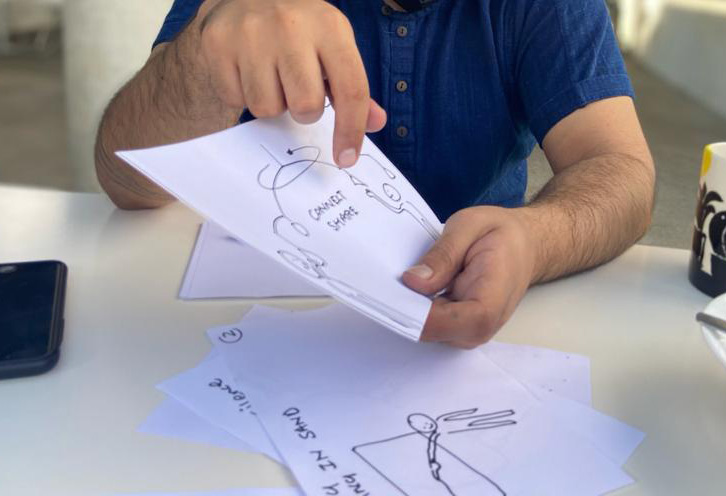
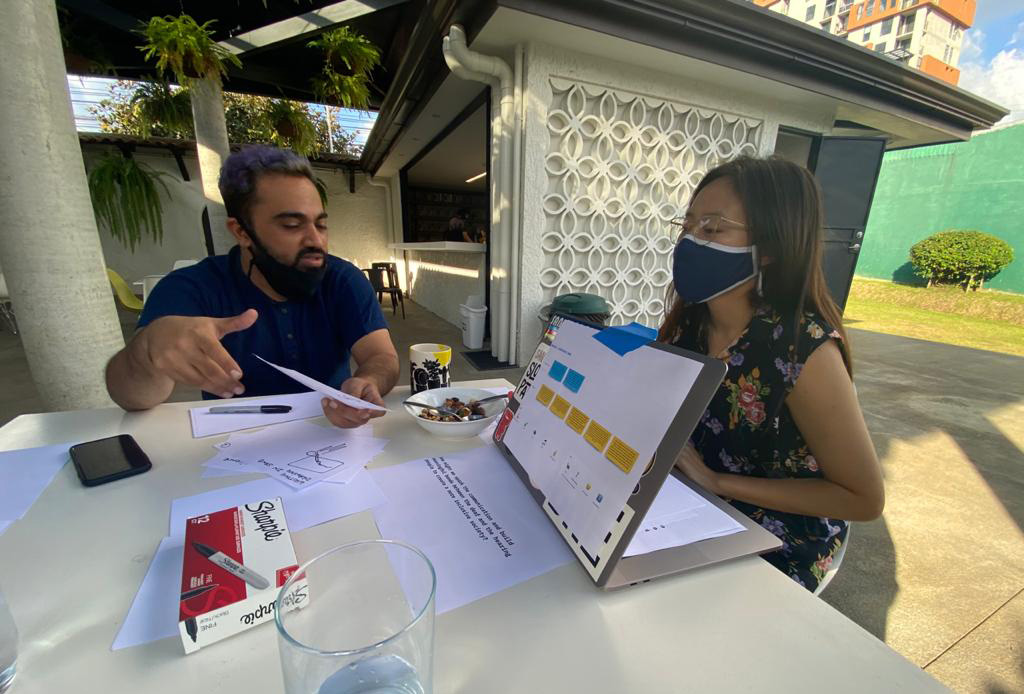
CONCEPT DEVELOPMENT (WORKSHOP, PROTOTYPING & USER TESTING)

A tool for deaf people to communicate with hearing people using sign language
In my first concept direction, I proposed the idea of a device that could convert sign language into speech and text to allow communication with the hearing.
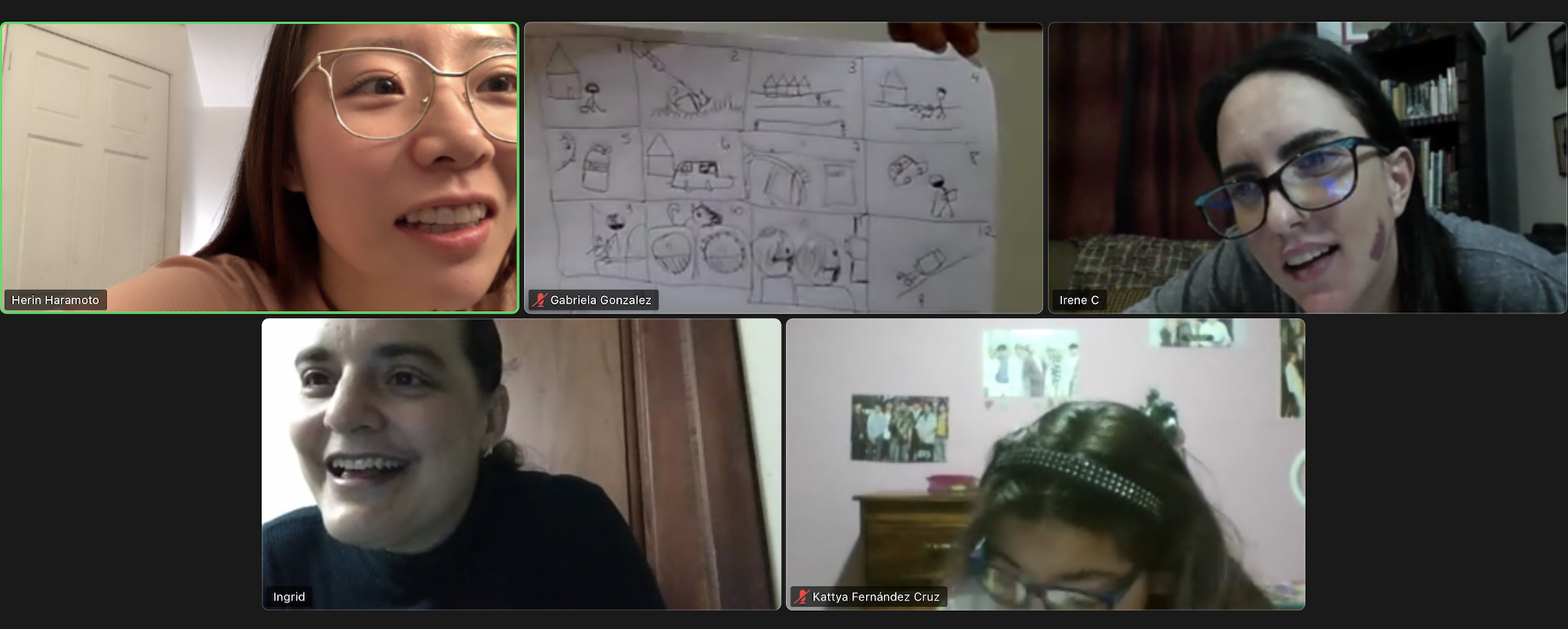
A journey map of their day and the moment of encountering sound in their daily life drawn by participants

However, the more I listened, the more I realized that translating would be very time consuming and boring, and that they would not actually enjoy the conversation. They wanted to connect with hearing people in a more direct and intuitive way. I was also inspired by their pride in being deaf, their deep culture, and their beautiful sign language.
I finally arrived at the direction of having music as mode of communication to allow deaf people to experience sound and share that experience with hearing people, rather than giving them another assistive device.
I finally arrived at the direction of having music as mode of communication to allow deaf people to experience sound and share that experience with hearing people, rather than giving them another assistive device.
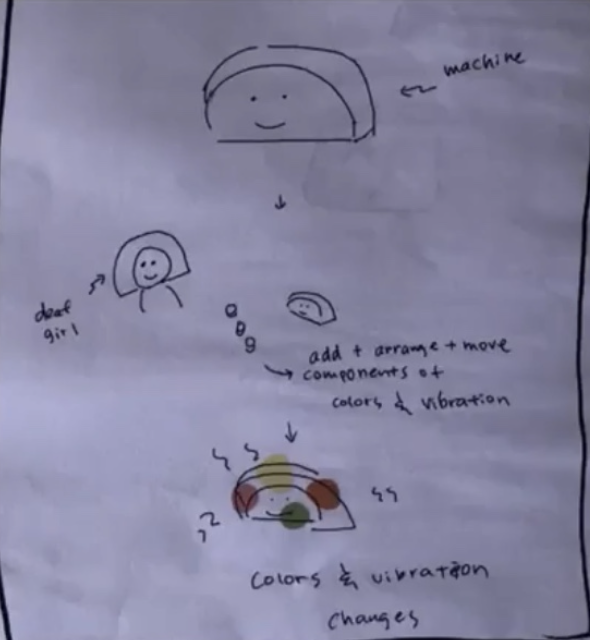
A tool that allows deaf people to experience sound and share those experience with hearing people
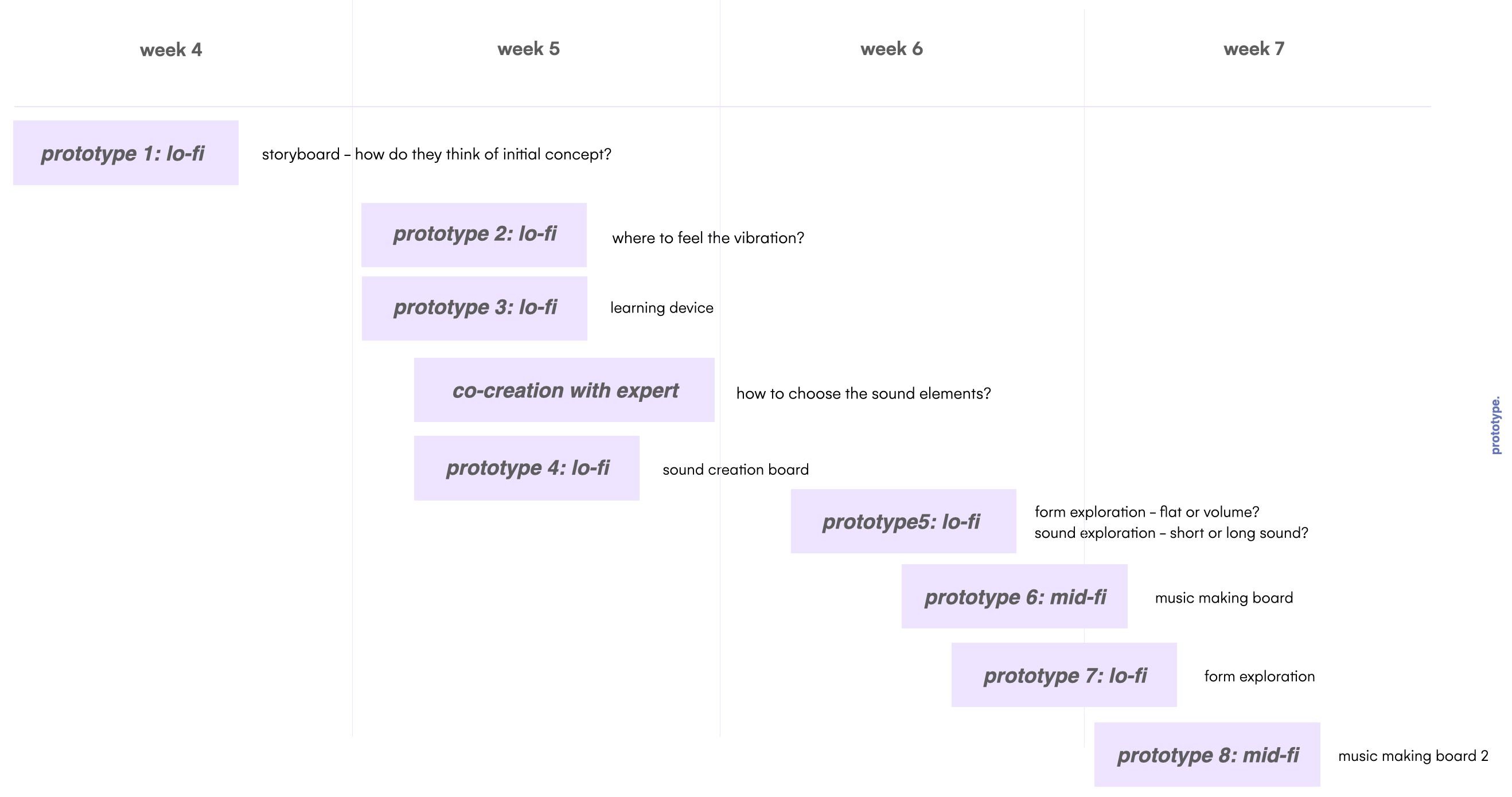
Initial storyboard to get feedback from people on how they value my concept

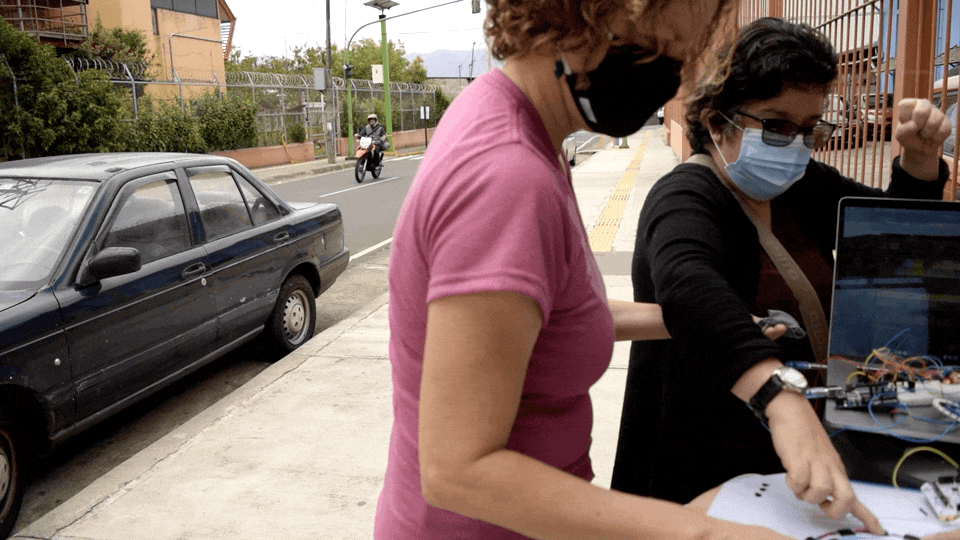
Multiple prototypes and tests to find out where they want to feel the vibration, forms, elements of sound, and each interactions
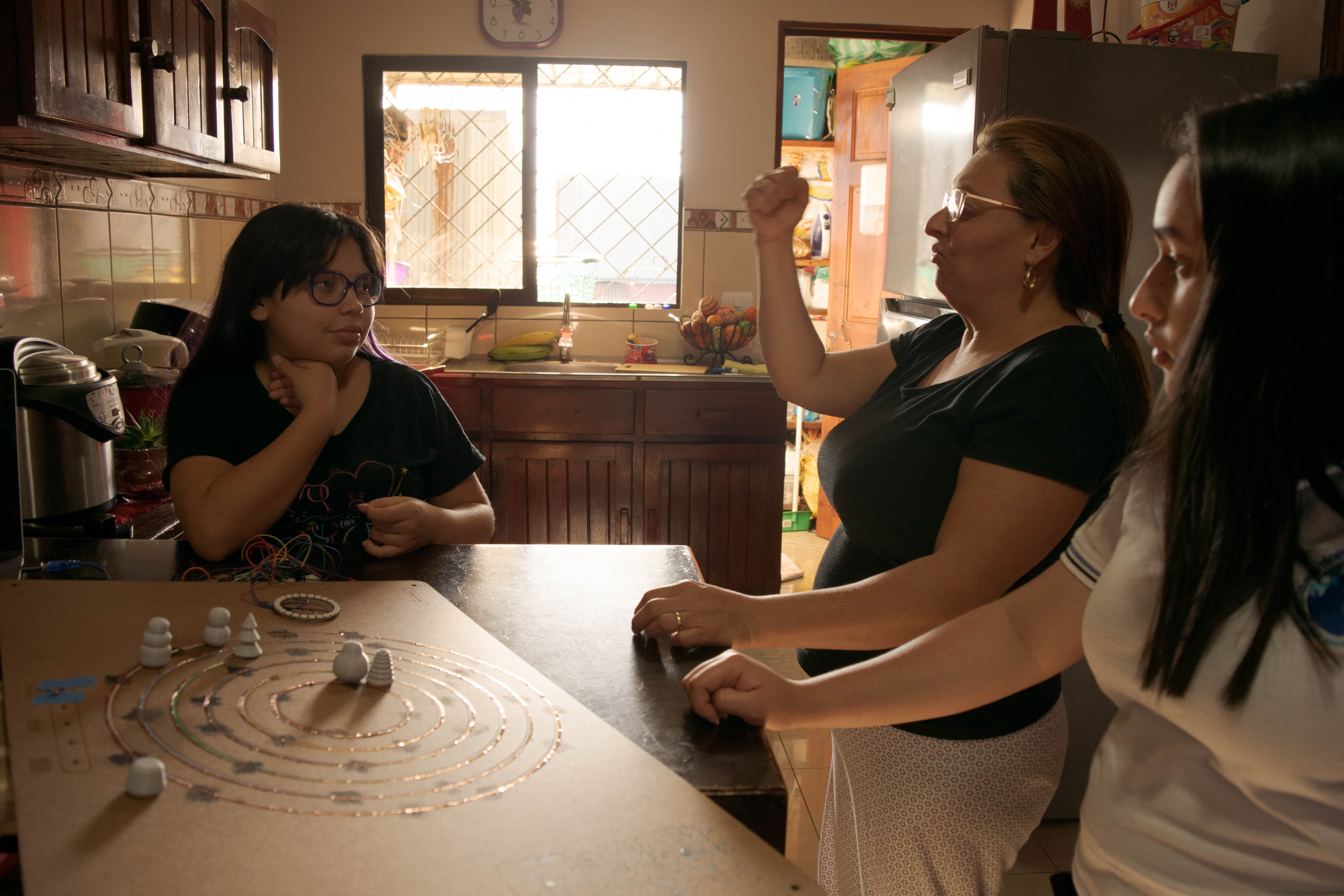
I asked her about rhythm to see what elements of sound I should incorporate into my concept. But her answer was “what is rhythm?” As she had never experienced sound, she didn't understand rhythm. Althought her whole family and I tried to explain the concept of rhythm to her, she was unable to grasp it. After this user testing session, I decided to use only visual icons and no single text for my concept. And started exploring icons for each music element.


© 2022 Herin Haramoto. All Rights Reserved.